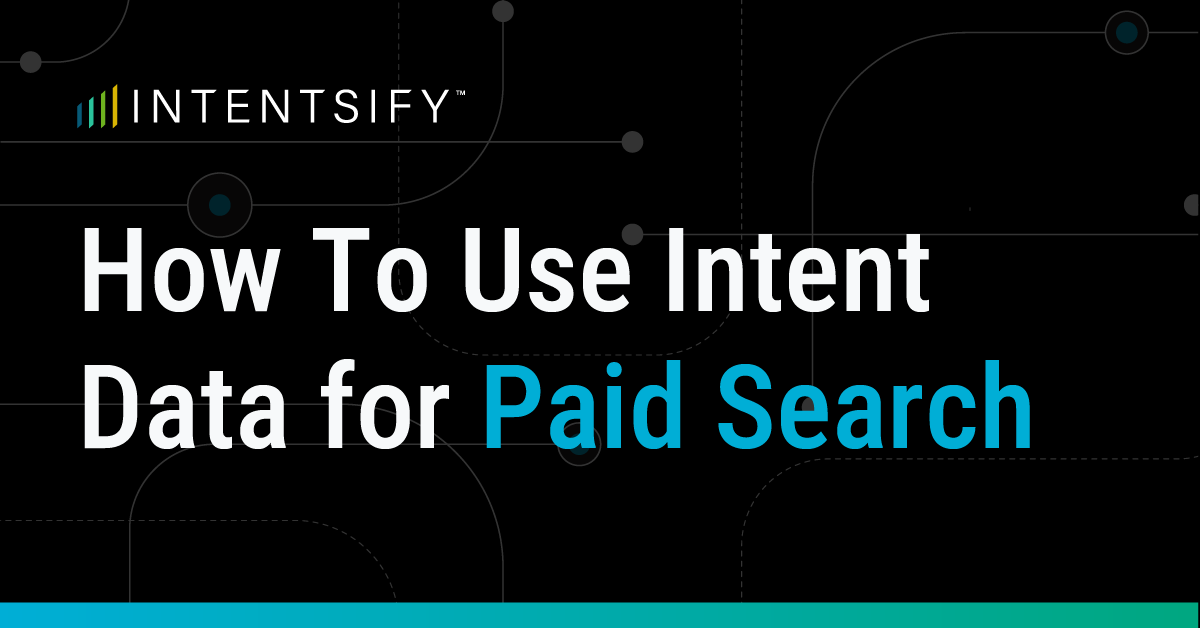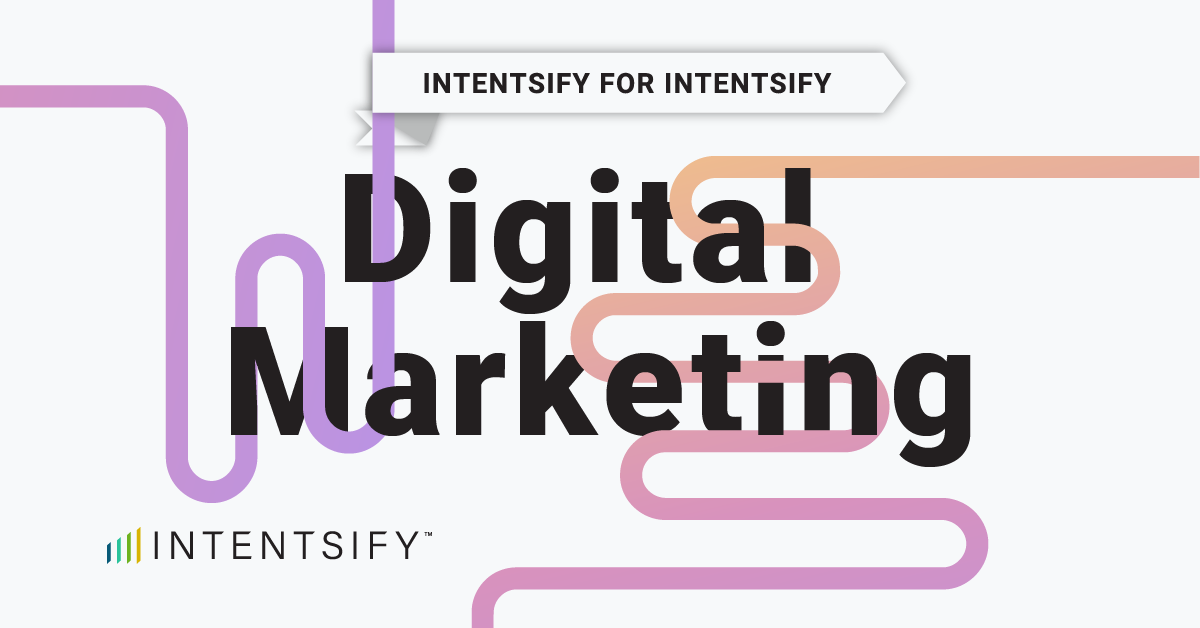Consumer behavior is continuously evolving, with more than 50% of buyers saying they use three to five channels before making a purchase. The widespread availability of generative AI also means a proliferation of content that is crowding the digital spaces in which brands can advertise and reach their audience.
Google’s regular search algorithms and systems updates don’t help the situation. In this new landscape, businesses who want to remain front of mind for their audience need to go beyond organic search and embrace paid search advertising that not only speaks the language of their customers but addresses the exact pain points they feel at each step of the buying journey.
This means going beyond familiarity with Google’s algorithms and SEO and embracing rich intent data as a guidepost to understanding consumer behavior. Below, we look at the differences between organic search vs. paid search and how intent data can help you boost your paid search advertising ROI.
Organic Search Vs. Paid Search
Organic search refers to all search results that are featured right under Google paid ads when somebody makes a query. The term organic means that the brand isn’t paying for this visibility. Instead, based on the quality of their website and content, Google selects them as a good website to show for that particular query or keyword.
Organic search can be wonderful for driving new business to your website, especially since it doesn’t cost you a dime. The catch? Building up your website authority takes time. For example, research shows that the click-through rate (CTR) for the first organic result on Google is 9.28%, but this drops dramatically for second (5.82%) and third place (3.11%). So, the returns are diminishing pretty fast unless you’re the top result.
Paid search, on the other hand, helps you circumvent this by putting yourself at the top of search results via a carefully designed ad strategy. Once you launch an ad campaign, you can rank on Google within 30 minutes and be charged only when someone clicks on your ad (Google uses a pay-per-click model).
How to Set Up a Google Ads Campaign?
Before heading to your Google Ads Manager, you need to be crystal clear about your goals, who you’re targeting, and your budget.
Define KPIs and Your Ad Budget
First, define your goals for each campaign and the key performance indicators (KPIs) that will tell you if your campaign is working or not. For example, a product launch campaign will look very different than an awareness-building campaign. While the former may look at conversion rates (CVR) and return on ad spend (ROAS), an awareness campaign may be more concerned with impressions, reach, and CTR.
In your context, consider what you want to achieve and how you can best measure it. Once you know this, make sure that you are super clear on the ad budget you’ve been allocated. Budget constraints can help you prioritize ads and keywords, which can drive better results.
Choose The Types of Paid Ads You Need
There are different types of ads you can incorporate into your campaign.
Here are just a few to consider:
- Search ads - text-based ads that appear at the top of search engine results pages (SERPs) when users search for specific keywords.
- Display ads – visual banner ads that appear across the Google Display Network on various websites, apps, and YouTube.
- Shopping ads - product-specific ads that include images, prices, and product details, usually appearing at the top of search results or on the Shopping tab in Google.
- Video ads - ads that appear before, during, or after YouTube videos or in other video content across the web.
- Remarketing ads – ads targeting users who have previously visited your site or interacted with your app but didn’t convert.
Depending on your goal, you can choose one or a combination of these ad types to widen your reach and engage your audience through different media.
Create Your Ad Copy
Writing ad copy is as much science as it is art. Good copy is relatable, specific, and highly targeted to customer’s needs. This often means going beyond keyword research and looking at the intent data that reveals individual buyer behaviors across channels.
In this context, signal-based marketing allows you to see how users change the keywords they use depending on where they are on their buyer journey. This can help you craft persuasive copy that speaks their language and draws people in.
Launch and Monitor Your Ads
Finally, once you’ve launched your campaign, you need to monitor its performance. Are your ads giving you the results you were hoping for? Are they performing better or worse at certain times of the day or parts of the week?
Don’t jump to conclusions right away. Sometimes, it takes time for your ads to start delivering results, so give them a few weeks before you decide to make changes.
How to Use Intent Data to Optimize Your Paid Search?
Intent data refers to all user behaviors that reveal their intention with a specific product or a service. For instance, this includes their search queries, website visits and session duration, clicks and content consumption, engagement with ads, etc.
In paid search, intent data can boost your campaigns by telling you what potential customers are looking for at every stage of the buying process. This can then help you deliver ads that match their needs, resulting in higher CTR, improved quality scores, and better ROAS.
One way to understand user behavior is by looking at their high-intent keywords. These can vary by the stage of their buying journey. For example, someone in the consideration phase for CRM may search for “best CRM software,” while a person ready to buy may query specific brand names or “buy CRM software.” Your ads need to reflect these differences if they’re to drive results. At Intentsify, for example, clients can see the most searched keywords from their target accounts each week and adjust their campaigns accordingly.
Other ways you can collect intent data are:
- Website visits: what pages they visited and how long they spent on each.
- CRM data: looking at the first-party data you already have in your system.
- Third-party data providers: tailor-made platforms like Intentsify who specialize in collecting and analyzing high-quality and high-volume intent data.
Once you have a well-rounded vision of not only how your customers speak (keywords) but also how they behave and where they’re looking to find what they need (intent data), you can build highly converting paid search campaigns that resonate with your audience.
Find Out More
Sourcing intent data is far easier today than even five or ten years ago. Brands have many tools at their disposal to capture website clicks, search queries, and engagement with emails. Tailor-made platforms like Intentsify that specialize in signal-based marketing can help businesses further enrich their data and build highly targeted campaigns that evolve alongside their customers. In a world of personalization and shortening attention spans, this can mean the very difference between success and mere survival.
If you want to learn more about how to level up your Google ads, you’re in luck because we just published a guide on this topic. You can get your copy here.






